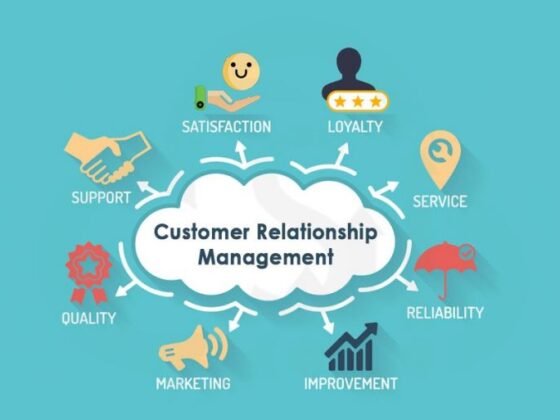How Technology is Transforming the Workplace
In today’s interconnected world, effective communication and collaboration are the lifeblood of any successful business. As work becomes increasingly global and remote, the need for advanced technology solutions to keep teams aligned has never been more critical. From video conferencing and instant messaging to collaborative workspaces and cloud-based project management tools, technology is reshaping how we work together.
The Impact of Technology on Communication and Collaboration
Technological advancements have not only facilitated faster communication but have also enabled teams to work together seamlessly, regardless of geographical barriers. Here’s how technology enhances these aspects:
- Speed and Efficiency: Messages can be sent instantly across the world, making communication rapid and reliable. Video calls and instant messaging tools eliminate the need for lengthy email threads.
- Remote Work Enablement: Collaboration tools have made remote work feasible by replicating the in-office experience. Teams can work on projects simultaneously, share updates, and stay connected as though they were in the same location.
- Better Organisation and Tracking: Project management software allows teams to track the progress of tasks, set deadlines, and monitor performance, ensuring accountability.
- Improved Engagement: Interactive and real-time communication tools, like video conferencing, keep employees engaged and connected, fostering a sense of unity.
Essential Apps for Enhanced Communication and Collaboration
Here’s a list of the best apps and software that can significantly improve communication and collaboration within your team.
1. Slack
Slack is a popular communication platform designed for teams. It offers instant messaging, file sharing, and a host of integrations to make workflows smoother. Channels can be created for different teams or projects, keeping discussions organised and easily accessible.
- Key Features: Real-time messaging, file sharing, and integration with other tools like Google Drive and Zoom.
- Use Case: Ideal for remote and hybrid teams needing quick communication and collaborative space for discussions.
- Download: Slack for Android | Slack for iOS | Slack Web
2. Microsoft Teams
Microsoft Teams is a comprehensive platform that combines chat, video meetings, file storage, and app integration. It is particularly beneficial for organisations that already use Microsoft 365, as it integrates seamlessly with other Microsoft products.
- Key Features: Video and audio conferencing, real-time chat, and built-in access to Office 365 apps.
- Use Case: Suitable for larger organisations needing a secure and integrated communication tool.
- Download: Microsoft Teams for Android | Microsoft Teams for iOS | Microsoft Teams Web
3. Zoom
Zoom is one of the most widely used platforms for video conferencing, making it an excellent choice for virtual meetings, webinars, and online collaboration. It offers features like breakout rooms, screen sharing, and recording, enhancing meeting productivity.
- Key Features: HD video conferencing, screen sharing, and meeting recordings.
- Use Case: Perfect for virtual team meetings, large-scale webinars, and educational sessions.
- Download: Zoom for Android | Zoom for iOS | Zoom Web
4. Trello
Trello is a project management tool that uses boards, lists, and cards to organise and prioritise tasks. It’s a visual platform where teams can track progress and collaborate on projects in a flexible and engaging way.
- Key Features: customisable boards, task assignments, and deadline tracking.
- Use Case: Useful for teams looking to manage workflows, plan sprints, or organise to-do lists.
- Download: Trello for Android | Trello for iOS | Trello Web
5. Google Workspace (formerly G Suite)
Google Workspace offers a suite of cloud-based productivity tools, including Gmail, Google Drive, Google Docs, Google Sheets, and Google Meet. It allows real-time collaboration, document sharing, and video conferencing, all within an integrated environment.
- Key Features: Real-time collaboration on documents, secure cloud storage, and video conferencing.
- Use Case: Ideal for businesses of all sizes looking for a collaborative suite that supports remote work.
- Access: Google Workspace
6. Asana
Asana is a task management platform that helps teams track the progress of projects, set priorities, and collaborate effectively. It provides a visual timeline to see how work maps out over time and manage dependencies.
- Key Features: Task assignments, project timelines, and integrations with other apps like Slack and Dropbox.
- Use Case: Best for teams handling complex projects that require careful tracking and coordination.
- Download: Asana for Android | Asana for iOS | Asana Web
7. Monday.com
Monday.com is a work operating system that allows teams to create their workflows and manage projects efficiently. It offers templates and custom dashboards to track project progress and collaborate effectively.
- Key Features: customisable workflows, team dashboards, and automated task assignments.
- Use Case: Ideal for teams that want a flexible project management solution with robust reporting features.
- Download: Monday.com for Android | Monday.com for iOS | Monday.com Web
8. Dropbox
Dropbox is a cloud-based file storage and sharing solution that simplifies document management for teams. It’s a convenient way to store and share large files and provides integration with many productivity and collaboration tools.
- Key Features: Secure file sharing, automatic file syncing, and team folders.
- Use Case: Useful for teams needing to collaborate on documents and store large files securely.
- Download: Dropbox for Android | Dropbox for iOS | Dropbox Web
Conclusion
Technology has made communication and collaboration more efficient, breaking down barriers and fostering teamwork across distances. By leveraging these advanced tools, businesses can improve productivity, streamline workflows, and enhance the overall work experience. Whether your team is fully remote or working in a hybrid environment, the right tech solutions can bridge gaps and keep everyone connected.


